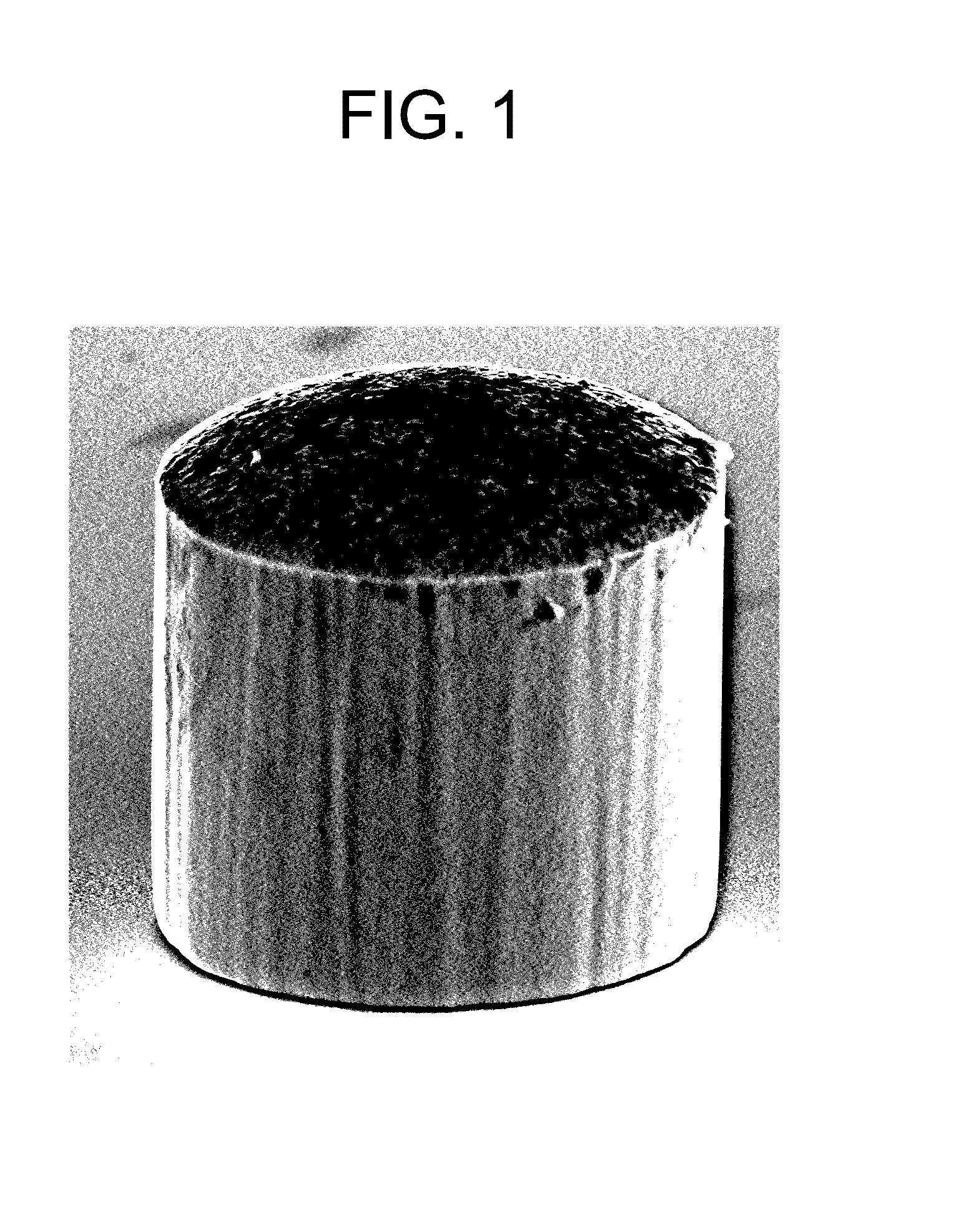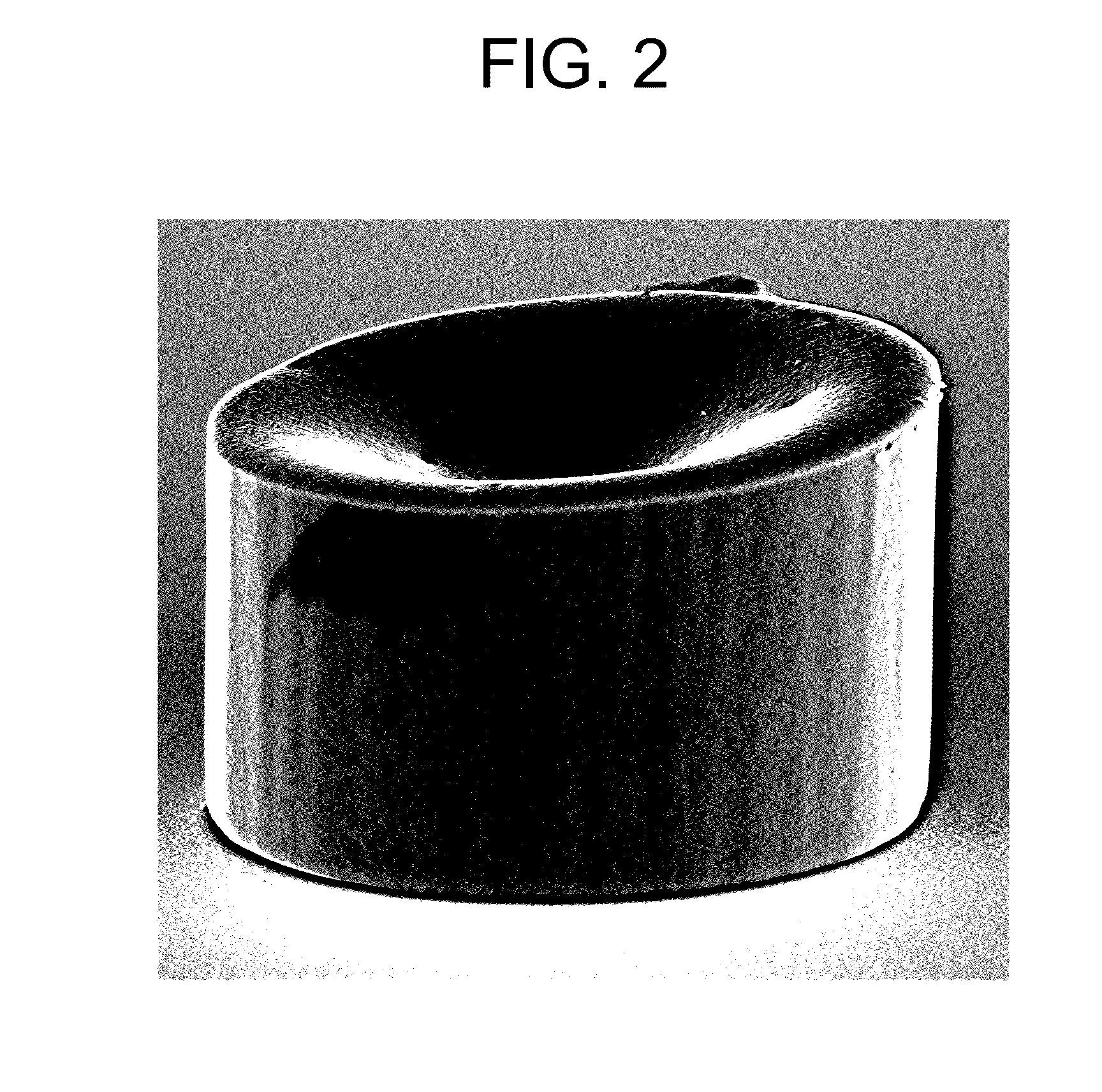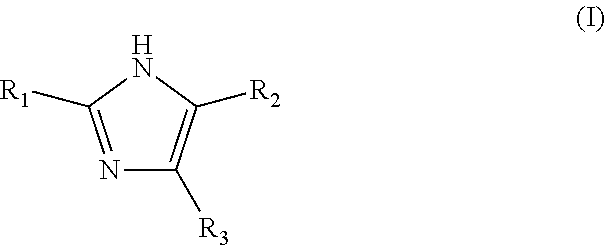Method of electroplating photoresist defined features from copper electroplating baths containing reaction products of imidazole compounds, bisepoxides and halobenzyl compounds
a technology of photoresist and electroplating bath, which is applied in the direction of photomechanical equipment, instruments, organic chemistry, etc., can solve the problems of compromising the performance of advanced packaging articles and similar morphological problems
- Summary
- Abstract
- Description
- Claims
- Application Information
AI Technical Summary
Benefits of technology
Problems solved by technology
Method used
Image
Examples
example 1
[0050]Imidazole (100 mol) was dissolved in 20 mL isopropanol in a 100 mL round-bottom, three-neck flask equipped with condenser, thermometer, and stir bar at 80° C. 1,4-butanediol diglycidyl ether (30 mmol) was added dropwise to the solution, and the vial containing the 1,4-butanediol diglycidyl ether was rinsed with 2 mL isopropanol. The heating bath temperature was increased to 95° C. The resulting mixture was heated for 2.5 hours and 1,4-bis(chloromethyl) benzene (30 mmol) was added as a solid to the reaction mixture and rinsed down the sides of the flask with 2 mL isopropanol. The oil bath temperature was kept at 95° C. for 2 hours, and then the reaction was left to stir at room temperature overnight. The reaction mixture was rinsed with water into a polyethylene bottle for storage. The molar ratio of imidazole moiety to 1,4-butanediol diglycidyl ether to 1,4-bis(chloromethyl) benzene was 1:0.3:0.3 based on monomer molar ratios. Reaction product 1 was used without purification.
example 2
[0051]Imidazole (100 mmol) was dissolved in 20 mL isopropanol in a 100 mL round-bottom, three-neck flask equipped with condenser, thermometer, and stir bar at 80° C. 1,4-butanediol diglycidyl ether (30 mmol) was added dropwise to the solution, and the vial containing the 1,4-butanediol diglycidyl ether was rinsed with 2 mL isopropanol. The heating bath temperature was increased to 95° C. The resulting mixture was heated for 2.25 hours and 1,2-bis(chloromethyl) benzene (30 mmol) was added as a solid to the reaction mixture and rinsed down the sides of the flask with 2 mL isopropanol. The oil bath temperature was kept at 95° C. for 2 hours, and then the reaction was left to stir at room temperature overnight. The reaction mixture was rinsed with water into a polyethylene bottle for storage. The molar ratio of imidazole moiety to 1,4-butanediol diglycidyl ether to 1,2-bis(chloromethyl)benzene was 1:0.3:0.3 based on monomer molar ratios. Reaction product 2 was used without purification....
example 3
[0052]An aqueous acid copper electroplating bath was prepared by combining 40 g / L copper ions from copper sulfate pentahydrate, 140 g / L sulfuric acid, 50 ppm chloride ion, 5 ppm of an accelerator and 2 g / L of a suppressor. The accelerator was bis(sodium-sulfopropyl)disulfide. The suppressor was an EO / PO copolymer having a weight average molecular weight of 1,000 and terminal hydroxyl groups. The electroplating bath also contained 1 ppm of reaction product 1 from Example 1. The pH of the bath was less than 1.
[0053]A 300 mm silicon wafer segment with a patterned photoresist 50 μm thick and a plurality of apertures (available from IMAT, Inc., Vancouver, Wash.) was immersed in the copper electroplating bath. The anode was a soluble copper electrode. The wafer and the anode were connected to a rectifier and copper pillars were electroplated on the exposed seed layer at the bottom of the apertures. The aperture diameters were 50 μm. Current density during plating was 9 ASD and the tempera...
PUM
| Property | Measurement | Unit |
|---|---|---|
| current density | aaaaa | aaaaa |
| surface morphology | aaaaa | aaaaa |
| conductive | aaaaa | aaaaa |
Abstract
Description
Claims
Application Information
 Login to View More
Login to View More - R&D
- Intellectual Property
- Life Sciences
- Materials
- Tech Scout
- Unparalleled Data Quality
- Higher Quality Content
- 60% Fewer Hallucinations
Browse by: Latest US Patents, China's latest patents, Technical Efficacy Thesaurus, Application Domain, Technology Topic, Popular Technical Reports.
© 2025 PatSnap. All rights reserved.Legal|Privacy policy|Modern Slavery Act Transparency Statement|Sitemap|About US| Contact US: help@patsnap.com



